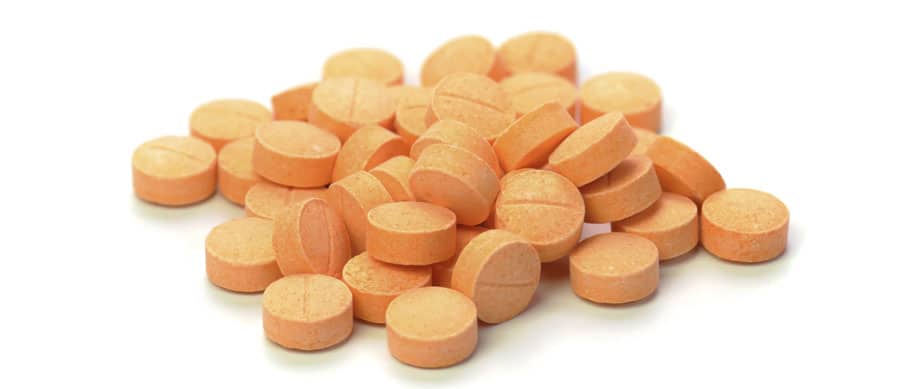Opiate addiction is a serious health problem that affects millions of people around the world. Unfortunately, not everyone has access to the help or resources they need to break the cycle of addiction and withdrawal. This is where Robaxin comes in. Robaxin is a prescription muscle relaxer that has been used in the treatment of opiate withdrawal symptoms. In this article, we’ll explore the evidence to find out if Robaxin can really help with opiate withdrawal.
No, Robaxin does not help with opiate withdrawal. Robaxin (methocarbamol) is a muscle relaxant and is not typically used to treat opiate withdrawal symptoms. Opiate withdrawal is often treated with medications such as Suboxone, methadone, or buprenorphine, which are administered to reduce cravings and withdrawal symptoms. Other medications such as clonidine may also be used to help manage symptoms. Talk to your doctor to determine the best course of treatment for you.

Does Robaxin Help With Opiate Withdrawal Symptoms?
Robaxin is a muscle relaxant that is sometimes used for the treatment of opiate withdrawal symptoms. It is a brand name for the medication methocarbamol and it works by blocking certain nerve impulses that cause muscle spasms. It is not a narcotic or a controlled substance, so it is available without a prescription. Robaxin is often used to help reduce the physical discomfort caused by opiate withdrawal, such as muscle pain and cramps. Additionally, some studies suggest that it may help with other symptoms of opiate withdrawal, such as anxiety, restlessness, and insomnia.
How Does Robaxin Work?
Robaxin works by blocking nerve impulses that cause muscle spasms. It is a muscle relaxant and it is not a narcotic or a controlled substance. It can help reduce physical discomfort, such as muscle pain and cramps, which are common symptoms of opiate withdrawal. Additionally, it may help to reduce other symptoms of opiate withdrawal, such as anxiety, restlessness, and insomnia.
Is Robaxin Safe to Use for Opiate Withdrawal?
Robaxin is generally considered to be safe to use for opiate withdrawal. It is not a narcotic or a controlled substance, so it is available without a prescription. It is important to note, however, that Robaxin can cause side effects, such as drowsiness, dizziness, and blurred vision. If you experience any of these side effects, it is important to speak to your doctor immediately. Additionally, it is important to note that Robaxin should not be used if you are pregnant or breastfeeding.
How Should Robaxin Be Taken?
Robaxin should be taken as directed by your doctor. The recommended dosage of Robaxin is 750 mg taken three times a day. It is important to note that Robaxin should not be taken with alcohol or other drugs, as this can increase the risk of side effects.
Conclusion
Robaxin is a muscle relaxant that is sometimes used for the treatment of opiate withdrawal symptoms. It can help reduce physical discomfort, such as muscle pain and cramps, which are common symptoms of opiate withdrawal. Additionally, it may help to reduce other symptoms of opiate withdrawal, such as anxiety, restlessness, and insomnia. Robaxin is generally considered to be safe to use for opiate withdrawal. However, it is important to note that Robaxin can cause side effects, such as drowsiness, dizziness, and blurred vision. If you experience any of these side effects, it is important to speak to your doctor immediately. Additionally, it is important to note that Robaxin should not be used if you are pregnant or breastfeeding.
Top 6 Frequently Asked Questions
1. What is Robaxin?
Robaxin is a muscle relaxant medication, also known as a brand name drug, that is used to treat skeletal muscle pain or spasms. It is a central nervous system depressant that works by blocking nerve signals sent to the brain that cause the spasms. It is available as an oral tablet and in an injectable form.
2. How Does Robaxin Help With Opiate Withdrawal?
Robaxin can help reduce some of the symptoms of opiate withdrawal, such as muscle aches, cramps, and restlessness. By acting as a central nervous system depressant, Robaxin helps to reduce the intensity of the withdrawal symptoms. It may also help to reduce anxiety and irritability caused by opiate withdrawal.
3. What Side Effects Can Robaxin Cause?
Robaxin can cause some side effects, such as drowsiness, lightheadedness, dizziness, nausea, and vomiting. It can also cause headaches, blurred vision, dry mouth, rash, and constipation. It can also cause an allergic reaction in some people.
4. Is Robaxin Safe?
Robaxin is generally considered safe when taken as directed. However, it should not be taken for more than three weeks without consulting a doctor. It should also be used with caution in people with liver or kidney disease, as well as in those with a history of drug or alcohol abuse.
5. Is Robaxin Addictive?
Robaxin is not considered to be addictive, but it can cause physical dependence if taken for extended periods of time. People should not stop taking Robaxin suddenly, as this can cause withdrawal symptoms. It is best to speak to a doctor before starting or stopping Robaxin.
6. What Other Treatments Are Available For Opiate Withdrawal?
Other treatments for opiate withdrawal include counseling, lifestyle changes, and medications. Counseling can help a person better understand their addiction and develop coping strategies. Lifestyle changes can include getting enough sleep, eating healthy, and exercising regularly. Medications, such as buprenorphine and naltrexone, can also help reduce withdrawal symptoms.
Gabapentin for Opiate Withdrawal?
Robaxin has been shown to help manage the physical symptoms of opiate withdrawal, such as muscle spasms, cramping, and pain. For those trying to manage an opiate addiction, Robaxin can be an effective tool to help alleviate some of the most uncomfortable symptoms and make the withdrawal process more manageable. Ultimately, Robaxin can be a helpful part of a comprehensive treatment plan for those seeking relief from opiate addiction.

